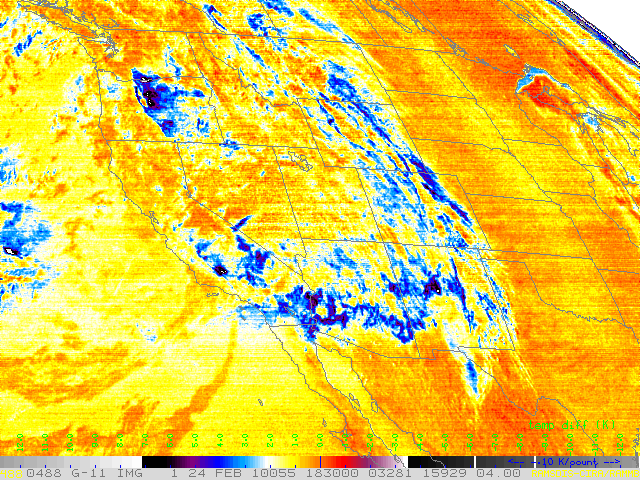GOES-11 Longwave channel difference for liquid water
J. Braun, Louie Grasso and Dan Lindsey
Figure 1: GOES-11 (0.67) µm image for 24 February 2010. (click image for larger view)
GOES-11 has two channels in the window region from which a channel difference can be produced. One channel is centered at 10.7 µm while the second is centered at 12.0 µm. Figure 1 (above) shows a visible GOES-11 image for 24 February 2010. Northern sections of lake Superior are clear while a cloud layer has formed over the southern portion of the lake. This was a result of relatively cold northerly winds advecting over the lake. In addition, portions of the eastern Pacific are cloud free. Reflective signatures at 3.9 µm suggest that the cloud layer over the southern portions of lake Superior is composed of liquid droplets. That is, the cloud free portion of lake Superior is a plane surface of liquid water; the cloud layer over the lake is composed of liquid water droplets; and the cloud free portion of the Pacific is also a plane surface of liquid water. Shown in Figure 2 (below) is the brightness temperature difference between the two channels, Tb(10.7) – Tb(12.0). Note the sharp contrast in values between the three liquid water bodies in the image. Although the features of interest are composed of liquid water, perhaps the difference is due salt water, fresh water, and small liquid water droplets. This may give rise to emissivity differences. Vertical profiles of water vapor and temperature may also give rise to such differences.  Figure 2: GOES-11 (10.7-12.0) µm channel difference. (click image for larger view)
Figure 2: GOES-11 (10.7-12.0) µm channel difference. (click image for larger view)

